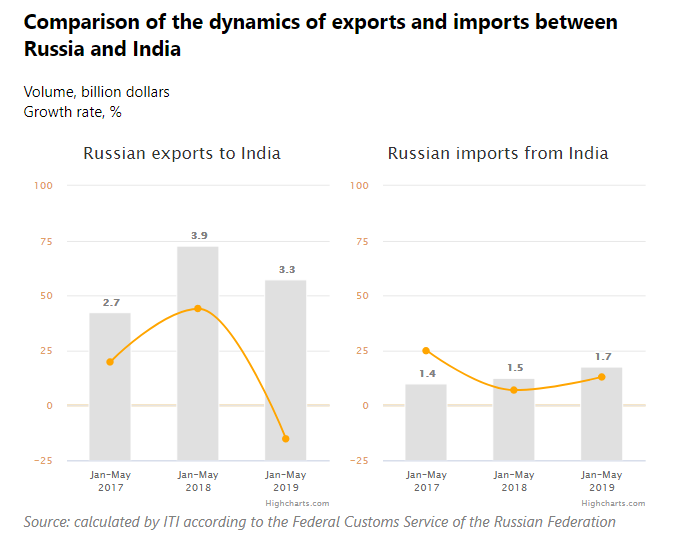In this analytical digest, the authors examine volumes of trade in commodities between Russia and India on a global scale. Among all Russia’s international trade partners, India is placed 16th by the volume of Russia’s exports to this country, with total exports from Russia to India worth USD 7.75 bn in 2018 (according to data by the Federal Customs Service of Russia). This demonstrates that there is still a great potential for growth. Russia had an even smaller significance for India, being 36th among India’s export markets in 2018. Total value of exports was USD 2.33 bn (according to data by ITC). Overall, despite an increase in the total value of Russia’s exports to India, India’s relative significance as an export market remained virtually unchanged due to a growth in total Russian exports. India’s exports to Russia display similar tendencies.
The authors of the digest note that the volume of trade between Russia and India increased by 17.3% in 2018 compared to the previous year, reaching USD 11 bn. The increase was mostly due to a growth in Russia’s exports to India (20% in the period under review), rather than a growth in Russia’s imports from India (11%). Russia’s exports to India are less diversified than Russia’s imports from India, which is evidenced by the fact that 8 largest commodity groups in Russia’s imports account for 57.3% of total imports, while 8 largest commodity groups in Russia’s exports cover 81.6%. The current weak spot in trade between Russia and India is a reduction of Russia’s exports to India by 15% in the first six months of 2019 compared to the same period a year earlier.

Finally, the publication gives separate consideration to the influence of Indian direct investments and projects to localize production on the territory of Russia, which are on the rise. Besides, stepping up the negotiations between Russia and India and signing a Free Trade Area (FTA) agreement will also contribute to diversifying the commodity structure and building up mutual trade between Russia as an EAEU member state and India.



